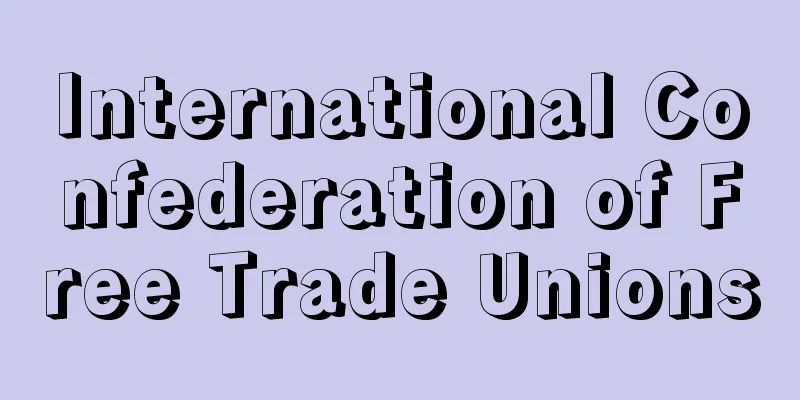Kins and affines

|
It refers to people who are connected by genealogical ties that arise through birth and marriage, and similar fictitious relationships. It includes blood relatives (kins) who can be traced as a succession of parent-child relationships, and affinity relationships such as spouses, spouses' blood relatives, and spouses of blood relatives. However, it should be noted that birth and marriage do not refer to biological facts, but rather to socially recognized facts. [Mitsuru Hamamoto] Kin and non-kinThe scope of those who are recognized as relatives does not necessarily vary from society to society. Societies that recognize unilineal descent, such as patrilineal societies, place emphasis on genealogical ties that are only through men, and recognize kinship going back many generations. Even clan members who believe in a common descent but cannot actually trace their exact lineage are considered relatives. In contrast, the scope of ties that can be traced through women is much smaller. In Japan, (1) blood relatives within the sixth degree of kinship, (2) spouses, and (3) relatives by marriage within the third degree of kinship are legally recognized (see below). For individuals, kinship is usually not a group but rather a vaguely-bounded category, the scope of which is greatly influenced by factors such as the presence or absence of actual social interactions, the assertion of rights and the fulfillment of obligations, and so on. In societies where kinship is important in daily life, the end of kinship is also the end of the world in which we can expect unconditional friendship, and non-kin are seen as potential enemies, even in the extreme. In many societies where all members of a community are related to one another in some way, non-kin members, if any, are present in the community are rapidly assimilated through marriage or fictitious ties. [Mitsuru Hamamoto] KinshipKinship is generally characterized by relations of cooperation and friendship, but on closer inspection, specific kinship ties are usually given specific meanings and are usually accompanied by specific rights, obligations, and patterns of behavior. These, too, are by no means uniform from society to society. For example, among the matrilineal Trobriand Islanders, the father is seen as more like a relative by marriage, as the mother's husband, than as a blood relative. In such a society, it is the maternal uncle who exercises the authority that a father has in a patrilineal society. There are often institutionalized attitudes and patterns of behavior toward certain kin. For example, the widespread avoidance of stepmothers. In the African Baganda, for example, men are not allowed to look at or speak to their stepmothers. In some Siberian societies, even the mention of the names of stepparents is prohibited. In many African patrilineal societies, there is also a special relationship between maternal uncles and nephews. For example, in the BaTonga of South Africa, nephews can playfully steal their uncles' possessions and food without being scolded. Thus, while there is a cold and avoidant relationship between some kin, there is also a system of "joking" between other kin, where whenever people meet, they joke around, talk bad about each other, and openly joke about sexual matters. The rights, obligations, behaviors, and attitudes associated with individual kinship relationships are by no means randomly arranged but are often systematically related to one another. The study of such kinship systems has traditionally been one of the most fruitful areas of anthropology. [Mitsuru Hamamoto] Kinship symbolsIn anthropology, it is customary to use symbols to indicate kinship relationships, and the symbols for father and mother can be combined to represent other relatives, such as MB (Mother's brother) for maternal uncle. [Mitsuru Hamamoto] Kinship groupsThere are various kinds of kinship groups that are formed based on kinship relationships. Families, especially nuclear families consisting of a husband and wife and their children, are bilateral kinship groups that are so widespread that they can be said to be almost universal. There are also various other known forms of families, such as lineal families, extended families, and joint families. Descent groups, which are groups of people who share a particular ancestor, and bilateral groups called kindreds that extend around an individual are also kinship groups that are found in many societies. [Mitsuru Hamamoto] Legal relativesKinship is the same as what is called kinship or relatives. However, legally, it is limited to (1) blood relatives within the sixth degree of kinship, (2) spouses, and (3) relatives by marriage within the third degree of kinship (Article 725 of the Civil Code). In this way, legally defining the scope of kinship was significant in the Meiji Civil Code era before World War II, as it clarified the existence of "kinship" as an external organization of the "family," and in fact, relatives played a large role, but under the current Civil Code, which focuses on couples and their immature children, it does not have much meaning. This is because, in cases where a certain legal effect is given by the closeness of a person, the scope of the kinship is often individually and specifically defined. For example, in important cases such as relatives with the obligation to support, relatives with the right to inherit, and relatives who are prohibited from marrying as incest, the scope is specifically defined according to the purpose, so the above definition of kinship is completely unnecessary in those cases. Even today, the scope of the above-mentioned relatives is only useful in cases of annulment of marriage, etc., claims for loss of parental rights, claims for appointment or dismissal of guardians or guardianship supervisors, etc. In any case, whether or not you have actual kinship relations has absolutely no bearing on whether or not you are legally related. [Yasuyuki Takahashi and Masamitsu Nozawa] Blood relatives/in-lawBlood relatives are people who are related by blood. Although there is no blood relationship between an adopted child and adoptive parents, legally they are treated as blood relatives from the day of adoption (called legal blood relatives, Article 809 of the Civil Code). Not only that, but the adopted child is also treated as having a blood relationship with the blood relatives of the adoptive parents (and vice versa, that is, no family relationship arises between the adoptive parents and the blood relatives of the adopted child). Blood relationships through adoption are extinguished by divorce. Even after the death of the adoptive parents, the adopted child can sever the family relationship with the blood relatives of the adoptive parents by divorce with the permission of the family court (Article 811, Paragraph 6 of the same law). Of course, even if the adopted child becomes a relative of the blood relatives of the adoptive parents through adoption, the family relationship with the original blood relatives continues as is. In-law relationships refer to the relationship between one spouse and the blood relatives of the other spouse. From the wife's perspective, her husband's parents and siblings are relatives by in-law, and from the parent's perspective, her son's wife is a relative by in-law. Also, from the child's perspective, his father's second wife, and from the husband's perspective, the wife's children by marriage are also relatives by in-law. In-law relationships are dissolved upon divorce. In-law relationships do not automatically disappear when one spouse dies (even if the husband dies, the wife's in-law relationships with her father-in-law and mother-in-law are not severed), but they will disappear if the surviving spouse expresses an intention to end the in-law relationship (by filing a notification in the family register). [Yasuyuki Takahashi and Masamitsu Nozawa] Direct lineage/collateral lineageA direct relative is a relative in a direct lineage, such as a father or grandfather, or a child or grandchild, while a collateral relative is someone who is related by a common ancestor, such as between brothers and sisters, between uncles and nephews, or between cousins. Both include relatives by blood as well as by marriage (a son's wife and father are direct relatives by marriage, and a sister's husband and older brother are collateral relatives by marriage). [Yasuyuki Takahashi and Masamitsu Nozawa] Ascendants and descendantsIn terms of family relationships, those in the generation before a certain person are called ascendants, and those in the generation after that person are called descendants. In conjunction with the classification of direct and collateral parents, the terms direct descendants and collateral ascendants are used. One's parents and grandparents are direct ascendants, children and grandchildren are direct descendants, and aunts and uncles are collateral ascendants. Note that when referring to direct ascendants and direct descendants, it usually refers only to blood relatives and does not include in-laws. [Yasuyuki Takahashi and Masamitsu Nozawa] How to count relativesDegree of kinship is a measure of how far or near a family relationship is. In the case of direct lineage parents, the degree of kinship is the number of generations (the first degree of kinship between parents and children, the second degree of kinship between grandchildren and grandparents). In the case of collateral lineage parents, the degree of kinship is determined by counting the number of generations from one of them back to their common ancestor and descending to the other (Civil Code Article 726). For example, between siblings, the common ancestors are the parents, so there is one generation from the older brother to the father, and another generation from the father down to the younger brother, so siblings are in the second degree of kinship. Similarly, between aunts and uncles and nephews and nieces, the degree of kinship is the third degree, and between cousins, the fourth degree (the common ancestors of both are grandparents). In the case of relatives by intimacy, the calculation is the same as for blood relatives (the son's wife and father are direct relatives by intimacy of the first degree, and the nephew's wife and uncle are collateral relatives by intimacy of the third degree). There are no degrees of kinship between spouses. [Yasuyuki Takahashi and Masamitsu Nozawa] [Reference] | | | | | | | | | | |©Shogakukan "> Relatives and Degrees ©Shogakukan "> Kinship symbols Source: Shogakukan Encyclopedia Nipponica About Encyclopedia Nipponica Information | Legend |
|
出生と婚姻により生ずる系譜的紐帯(ちゅうたい)、およびそれに類する擬制的関係によって結ばれた人々をさす。親子関係の連続としてたどることができる血縁者kinsや、配偶者、配偶者の血縁者、血縁者の配偶者などの姻縁関係者affinesが含まれる。ただし、出生といい婚姻といっても、それはけっして生物学的な事実をさしているわけではなく、社会的に認められた事実をさしていることに注意せねばならない。 [濱本 満] 親族と非親族親族と認定される範囲は社会ごとにかならずしも一様ではない。単系出自を認めている社会、たとえば父系社会では、系譜的紐帯のうち男性のみを通じての関係に重点が置かれ、何世代にもさかのぼって親族関係が認知される。共通の出自の信仰のみで実際には正確な系譜がたどれない氏族成員までもが親族とみなされる。これに対し、女性を通じての紐帯がたどられる範囲は、はるかに小さい。日本では、法的には(1)6親等内の血族、(2)配偶者、(3)3親等内の姻族、が親族と認められている(後述)。 個々人にとっての親族は、集団ではなく、むしろ境界のぼやけた範疇(はんちゅう)であることが普通で、その範囲は、実際の社会的つきあいの有無、権利の主張や義務の履行などの要因によっても大きく影響を受ける。 親族関係が日常生活で重要な社会では、親族関係が終わるところは、また無条件に友好関係を期待できる世界が終わるところでもあり、非親族は極端にいえば潜在的な敵ともみなされている。一つの共同体の成員が全員なんらかの形で互いに親族であるような社会も多く、そのような社会では、かりに共同体内に非親族成員がいたとしても、結婚や擬制的紐帯を通じて、急速に同化されてゆく。 [濱本 満] 親族関係親族を一般に特徴づけるのは、協力と友好の関係であるが、詳しくみると、特定の親族紐帯に固有の意味が与えられ、特定の権利・義務や行動様式が伴っているのが普通である。これらも、社会ごとに、けっして一様ではない。たとえば、母系のトロブリアンド島民の間では、父は血縁者というよりも、母の夫として、姻縁関係者に近いとらえられ方をしている。そこでは、父系社会で父がもっているような権威を行使するのは、母方のおじである。 特定の親族に対して、制度化された態度や行動の様式がしばしばみられる。義理の母親に対して広くみられる忌避の関係も、その一例である。たとえば、アフリカの民族集団バガンダの社会では、男は義理の母親を直視したり、面と向かって口をきいたりしてはならない。シベリアの一部の民族集団のように、義理の両親の名前を口に出すことすら禁じていた社会もある。アフリカの父系社会の多くでは、また、母方のおじとおいの間に一種特殊な関係がみられることがある。南アフリカのバトンガの社会にみられる、おいがおじの所有物や食事をからかい半分に盗んでも、しかられもしない、といった例がそれである。このように、ある種の親族との間に冷たい忌避の関係がある反面、別の親族との間に、会えばかならずふざけあったり、悪口を言い合ったり、性的な冗談をおおっぴらに行う「冗談関係」とよばれる制度がみいだされることもある。 個々の親族関係に伴う諸権利・義務、行動様式や態度は、けっしてでたらめに配置されているわけではなく、しばしば互いに体系的に関係づけられている。このような親族体系の研究は、従来、人類学のもっとも実り多い分野の一つである。 [濱本 満] 親族関係の記号人類学においては、親族関係を表示するのに記号を用いるのが通例である。また、父や母を表す記号は、組み合わせることによって、他の親族を表すことができる。たとえば、母方のおじ=MB(Mother's brother)といったぐあいである。 [濱本 満] 親族集団親族関係をもとにして構成された親族集団には、さまざまなものがある。家族、とりわけ夫婦と子供からなる核家族は、ほとんど普遍的といってよいほど広くみられる双系的な親族集団である。家族には、ほかに直系家族、拡大家族、合同家族などさまざまな形態が知られている。特定の祖先を共有する人々の集まりである出自集団や、個人を中心に広がる双系的なキンドレッドとよばれる集団なども、多くの社会にみられる親族集団である。 [濱本 満] 法律上の親族親族は、親類・親戚(しんせき)などとよばれるものと同じものである。ただし、法律上は、(1)6親等内の血族、(2)配偶者、(3)3親等内の姻族に限定される(民法725条)。このように、法律的に親族の範囲を規定することは、第二次世界大戦前の明治民法時代において「家」の外郭団体としての「親族」の存在を明らかにする意味があったし、また、実際に親族が果たす役割も大きかったが、夫婦とその未成熟の子を中心とする現行民法のもとでは、あまり大きな意味をもたない。というのは、ある者の近親であることによってある法律上の効果が与えられるというような場合には、個別的、具体的にその親族の範囲が定められる場合が多い。たとえば、扶養義務を負う親族、相続する権利のある親族、近親婚として結婚が禁止される親族など、重要な場合は、すべてその目的に応じて具体的にその範囲が定められているから、前記の親族の定義はそれらの場合には、まったく不要となるわけである。現在でも前記の親族の範囲が役にたつのは、結婚などの取消し、親権喪失などの請求、後見人や後見監督人の選任・解任などの請求の場合に限られる。また、いずれの場合にせよ、実際の親類づきあいをしているかどうかが法律上の親族であるかどうかにはまったく関係がない。 [高橋康之・野澤正充] 血族・姻族血族とは、血のつながりのある者同士をいう。養子と養親との間には、本来血のつながりはないが、法律上は養子縁組の日から血族として取り扱われる(法定血族という。民法809条)。それだけでなく、養子は養親の血族との間にも血族関係があるものとして取り扱われる(その逆、すなわち養親と養子の血族との間には親族関係を生じない)。養子縁組による血族関係は離縁によって消滅する。養親が死亡したのちでも、養子は家庭裁判所の許可を得て離縁することによって、養親の血族との親族関係を切ることができる(同法811条6項)。なお、養子縁組によって養子が養親の血族と親族になっても、本来の血族との間の親族関係はそのまま存続するのは、もちろんである。 姻族とは、配偶者の一方と他方の血族との間をいう。妻からみて夫の親や兄弟は姻族であり、親からみれば息子の妻は姻族である。また、子からみて父の後妻や、夫からみて妻の連れ子なども姻族である。姻族関係は、離婚によって消滅する。夫婦の一方が死亡しただけでは姻族関係は当然には消滅しないが(夫が死んでも妻は舅(しゅうと)・姑(しゅうとめ)との姻族関係は切れない)、生存配偶者が姻族関係終了の意思表示(戸籍の届け出による)をすれば、消滅する。 [高橋康之・野澤正充] 直系親・傍系親直系親とは、自分からみて、父・祖父や、子・孫などのように、直通する系列にある親族をいい、傍系親とは、兄弟姉妹の間、伯叔父母と甥姪(おいめい)の間、いとこ同士のように、共同の祖先によってつながる関係にある者同士をさす。どちらも、血族のほか姻族も含む(息子の妻と父とは直系姻族、妹の夫と兄とは傍系姻族の関係にある)。 [高橋康之・野澤正充] 尊属・卑属ある人を基準として、親族関係において、その人より先の世代にある者を尊属といい、その人より後の世代にある者を卑属という。直系親・傍系親の分類と結び付いて、直系卑属・傍系尊属などと用いられる。自分の親や祖父母は直系尊属、子や孫は直系卑属、伯叔父母は傍系尊属となる。なお、普通、直系尊属・直系卑属などという場合には、血族だけで姻族は含まれない。 [高橋康之・野澤正充] 親等の数え方親等とは、親族関係の遠い近いを計る尺度である。直系親の場合には、世代の数がそのまま親等となる(親と子とは1親等、孫と祖父母とは2親等)。傍系親の場合は、その一方から共同の始祖にまでさかのぼり、他の一方に下るまでの世代の数を数えて、これを定める(民法726条)。たとえば、兄弟の間では、その共同の始祖は父母であるから、兄から父まで1世代、さらに父から下って弟まで1世代で、結局兄弟は2親等の親族である。同様に、伯叔父母と甥姪の間は3親等、いとこ同士は4親等である(どちらも共同の始祖は祖父母)。姻族の場合も、血族の場合と同様の計算による(息子の妻と父とは1親等の直系姻族、甥の妻と伯叔父とは3親等の傍系姻族)。なお、配偶者には親等はない。 [高橋康之・野澤正充] [参照項目] | | | | | | | | | | | |©Shogakukan"> 親族と親等 ©Shogakukan"> 親族関係の記号 出典 小学館 日本大百科全書(ニッポニカ)日本大百科全書(ニッポニカ)について 情報 | 凡例 |
<<: Seizokukibun - Chronicles of the People
>>: Heart medicine - Shinzouyaku
Recommend
Shigeru Onoe - Shigeru Onoe
…(2) II (1909-1983) Born in Tokyo. A disciple of ...
Flower Boar - Kacho
…(6)Chinese: A general term for breeds native to ...
Cats are not allowed - Cats are not allowed
Rodenticide. Contains about 8% yellow phosphorus, ...
Nagaland [State] (English spelling)
A state in the northeastern corner of India, borde...
Nicolas Louis de Lacaille
French astronomer. Founder of the Southern Conste...
Basic Law on the Environment
This law was promulgated and put into effect on N...
A group of people
…In 1891, he became a pupil of Mizuno Toshikata (...
Joint Cavity
Synovial fluid is a fluid that is contained within...
Weigle, J.
...Since this research, intragenic recombination ...
(■1) Chemical money - Aikasen
… [Economics of Money] [Definition and Function o...
Interlude Kyogen
The part of Noh that is handled by the Kyogen act...
"Kyoganokomusume Dojoji" - Kyoganokomusume Dojoji
…(1) The title of a jiuta song. Nakamura Tomijuro...
Unkei
Unkei was a Buddhist sculptor from the early Kama...
Hanaizumi [town] - Hanaizumi
A former town in Nishiiwai County, the southernmos...
Back - Ura
1 10. The front and opposite sides of something th...









